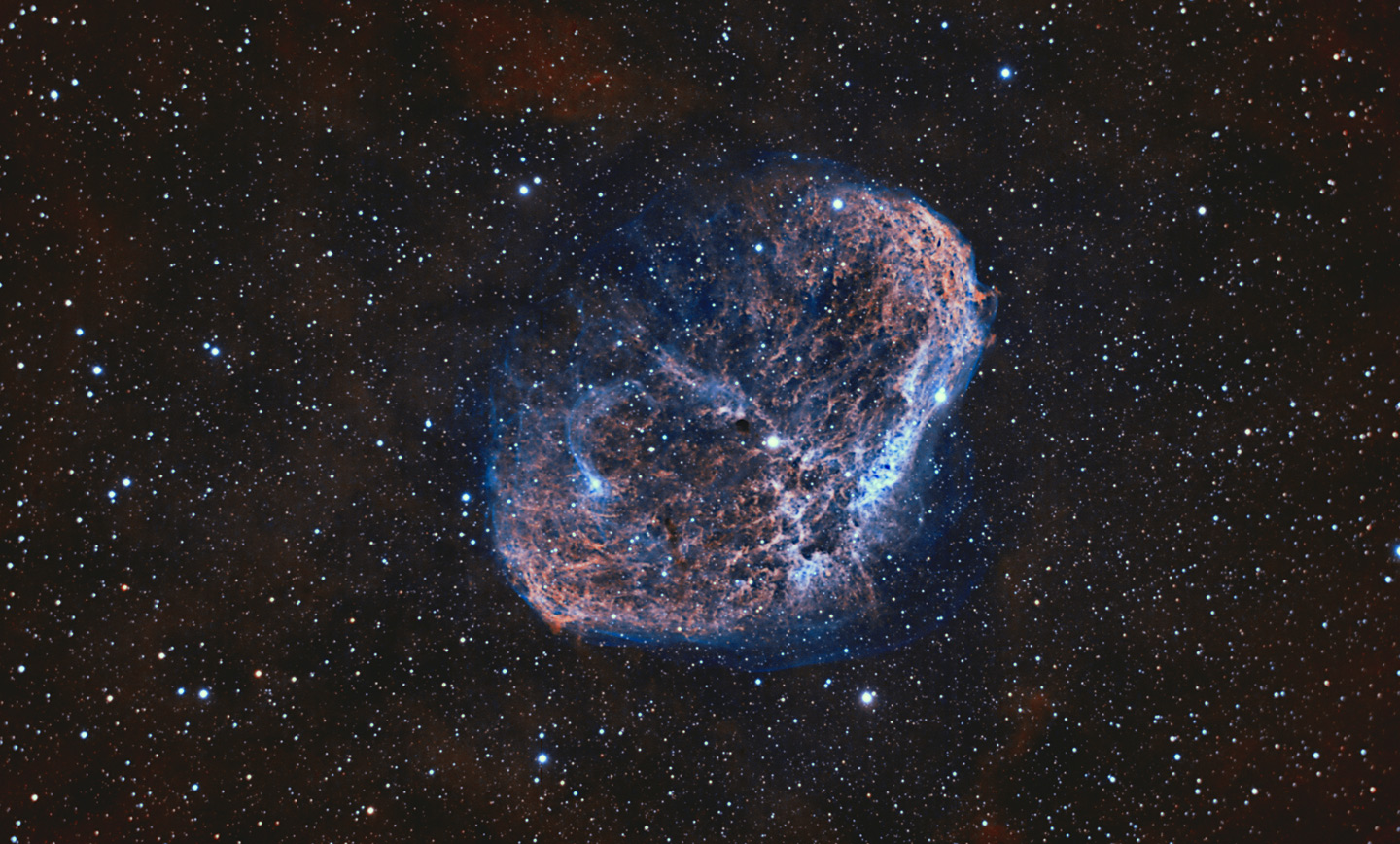Optics/mount : 12″ACF 2.7m AP-Reduzer Alt-5
Camera/filters: Atik 11002 AstrodonHa/OIII
Exposure:35x900sec Ha, 27x600sec
18 August 2013
The Crescent Nebula (also known as NGC 6888, Caldwell 27, Sharpless 105) is an emission nebula in the constellation Cygnus, about 5000 light-years away. It was discovered by Friedrich Wilhelm Herschel in 1792. It is formed by the fast stellar wind from the Wolf-Rayet star WR 136 (HD 192163) colliding with and energizing the slower moving wind ejected by the star when it became a red giant around 250,000[3] to 400,000[citation needed] years ago. The result of the collision is a shell and two shock waves, one moving outward and one moving inward. The inward moving shock wave heats the stellar wind to X-ray-emitting temperatures.
It is a rather faint object located about 2 degrees SW of Sadr. For most telescopes it requires a UHC or OIII filter to see. Under favorable circumstances a telescope as small as 8cm (with filter) can see its nebulosity. Larger telescopes (20cm or more) reveal the crescent or a Euro sign shape which makes some to call it the “Euro sign nebula”. @Wikipedia
La nébuleuse du Croissant (NGC 6888) est une nébuleuse en émission située dans la constellation du Cygne, à environ 5 000 années-lumière2. Elle est issue des rapides vents solaires créés par l’étoile Wolf-Rayet WR 136, qui -par collision- ionisent les vents plus lents de cette même étoile lorsqu’elle était plus jeune et plus petite (de type géante rouge) il y a 400 000 ans. Le front de choc engendre ce que l’on nomme une bulle de Wolf-Rayet. @Wikipedia
